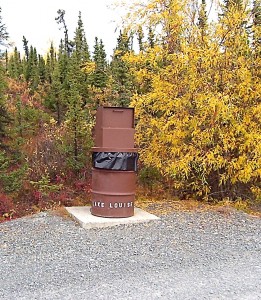When in Bear Country, Stay Bear Aware
By Marcia Anderson
As a former Scout leader I’ve spent a lot of time in places visited by black bears. I often taught bear-safe practices. As Scouts, my daughter and sons learned about bears at an early age and continue to put into practice prevention lessons they learned.
Today, I educate schools and communities about preventing pests through Integrated Pest Management, a sensible and sustainable approach to controlling pests. The main principle is prevention. Every pest needs food, water and a safe harbor to survive. If one of these is denied, the pest will no longer thrive and will move on. So yes, just think of bears as very big pests.
As bear populations increase and more people live and recreate in areas occupied by bears, human-bear conflicts also increase. Most of these conflicts are caused by our lack of knowledge.
Bears have made a comeback throughout New England. although Maine has the largest bear population, the American black bear, the largest predator in the Northeast, rose more dramatically in Massachusetts, where the numbers of native bears grew nine-fold since 1980s, from a few hundred to more than 4,500.
If you live in, or visit bear country here are a few things you should keep in mind.
As I said, pest management includes removing whatever attract pests – in this case, food for bears. Garbage is the biggest offender Bears can smell food from more than a mile away. They travel great distances to track down smells, crossing roads and bridges and placing themselves and people at risk.
Bears will eat just about anything they deem to be nutritious. The calories a bear can consume by picking through garbage can surpass the forage they can find in nature. Problems arise when bears have access to food sources such as garbage, barbecue grills, pet food, or bird seed. Normally, black bears are too shy to risk contact with humans, but their need to find food can overwhelm this fear.
Once a bear finds a food source, such as school dumpsters or neighborhood garbage cans, it will continue to forage until the food is removed. It may take weeks for the bear to understand the food source is no longer available. Once a bear is dependent on human food, its chances of survival are reduced.
If your school, home, or business is in an area that attracts bears, build a shed to protect your garbage cans or secure garbage in a bear-resistant containers. Tightly tie all bagged garbage and keep lids closed to reduce odors.
Teach your children to respect, not fear bears. Black bears are typically not aggressive and usually flee when confronted. Make a plan identifying safe areas, noting clear escape routes for the bear, and collecting noise-making items to scare off the bear.
After a bear visit, look around to see what might have attracted it.
 If you live in or work in bear country, encourage surrounding neighbors and your local government, to pass ordinances to keep potential bear food sources secure. It is illegal in many states to place food or garbage out that attracts bears and causes conflicts.
If you live in or work in bear country, encourage surrounding neighbors and your local government, to pass ordinances to keep potential bear food sources secure. It is illegal in many states to place food or garbage out that attracts bears and causes conflicts.
Feed pets indoors or bring in dishes after feeding. Remove bird feeders from late spring through early fall and when they are up, empty them nightly. Keep outdoor grills clean and stored securely. Keep areas under fruit trees clean. Better yet, if you don’t want bears, don’t plant fruit trees! Compost also attracts bears so don’t keep compost in unsecured areas.
If you live in bear country, adopt preventative measures that will help you and the bears avoid unwanted encounters. For more visit the National Park Service bear safety webpage.
-30-
Marcia Anderson, who has a doctorate in environmental management, works with EPA’s headquarters on issues related to pest management in schools. She formerly worked in pesticides for EPA Region 2 and has a home in Lyman, Maine.












